Handling お取り扱いについて
About MINO ware
Our company is located in Tajimi City, Gifu Prefecture. Tajimi City is known as one of the main production centers of MINO ware, and ceramics produced mainly in the cities of Toki, Tajimi, Mizunami, and Kani in Gifu Prefecture are generally called MINO ware. The Tono region, where MINO ware is produced, is the largest production center of ceramics in Japan, accounting for about half of the total production of ceramics in Japan, and the types and styles of ceramics produced in this region are more varied than those in other regions.
About material properties
Ceramics
Compared to porcelain and semi-porcelain, the clay used for ceramics is relatively coarse, so it does not conduct heat well, retains heat well, and is characterized by its warm texture and taste. Subtle hues and textures are created by the chemical reaction between the clay, glaze, and firing temperature. Because it is made of natural materials, each piece of the same product will have a different look and feel.
Semi-porcelain
It is a material that retains the texture of clay while also possessing the properties of porcelain. Because it is fired at a lower temperature, it is characterized by its ability to produce rich colors in painted and colored glazes. The base is almost porcelain, but it is slightly water-absorbent.
Porcelain
Porcelain is fired at a higher temperature compared to pottery and semi-porcelain, resulting in a vitrified, dense body with a pure white color and a slight translucency. It is hard, non-absorbent, and easy to keep clean, making it a practical material for daily use. Depending on the mineral content of the clay and the firing method, there are various types of porcelain, each with its own unique color and texture.
About the display of product descriptions
- Prices shown do not include tax. Consumption tax of 10% will be imposed separately.
- Product size is in mm. φ(W): diameter (width) D: depth H(L): height (length)
- Capacity is full capacity. There is a slight difference depending on the product. Pot is measured without a tea strainer. The capacity of a deep dish, etc. is the amount of water that will not spill when the dish is placed horizontally. Please use this as a rough guide.
- For detailed material characteristics and precautions for handling, please refer to Material Characteristics.
Product characteristics
This is an explanation of the individual differences that tend to appear due to the characteristics of the product, and a description of the characteristic products.

Crazing
These are fine crack-like patterns that appear on the surface (glaze) due to the difference in shrinkage rates between the clay and the glaze during the firing process. They range from easily visible to microscopic and are a common characteristic of pottery.While they do not affect usability, crazing is absorbent, which may cause staining from tea or other liquids.
For proper care before and after use, please refer to the section [About Pottery] below.
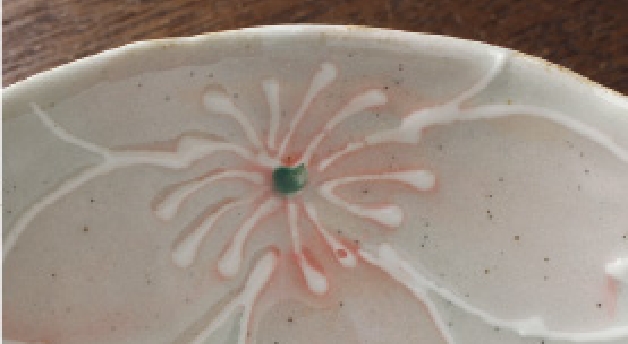
Handmade
Handmade products are those that are individually molded by hand or hand painted, colored, or glazed by craftsmen. Therefore, the size, thickness, shape, and outline of the product may differ from product to product. In addition, products with patterns painted with a brush may have differences in color intensity and patterns. The warmth of the handmade products is what makes them so appealing.
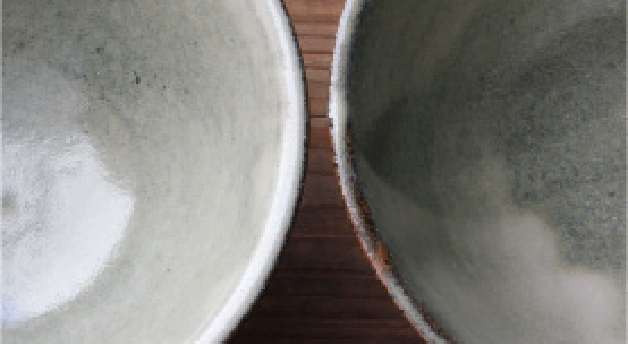
Glaze variations and textural differences
Ceramics are fired in a kiln at high temperatures of around 1100 to 1300 degrees Celsius. Therefore, even if the same glaze and clay are used, there will be variations in the finished product. The color, luster, and texture of each piece may differ, and burn marks may appear. In addition, since the glaze and clay are applied mainly by hand, there is always some unevenness in the application of the glaze and clay. These varied expressions are one of the unique charms of pottery.
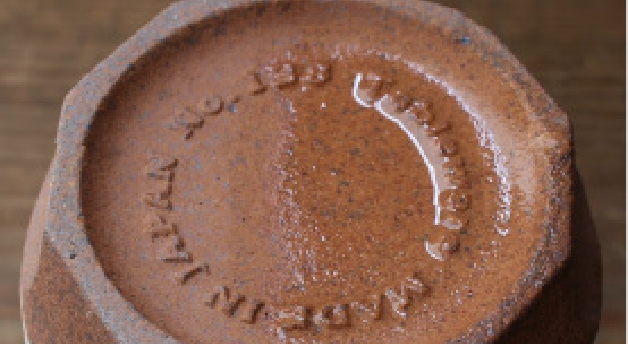
Water absorption
Many ceramics pieces are absorbent, and prolonged exposure to moisture can lead to water leakage. Additionally, liquids from food or beverages may seep into the crazing (fine cracks in the glaze), causing stains or tea discoloration.
To prevent this, sealing treatment is recommended.
After use, avoid soaking the piece for extended periods, wash it promptly, and ensure it is thoroughly dried before storing.
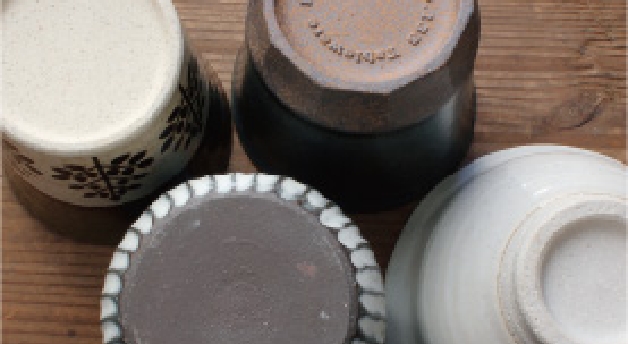
Types of pottery clay
To enhance the texture of pottery, some products are made with clay that contains impurities such as iron, or with coarse clay that contains many stones. Components such as iron may react and create black spots or changes in the color of the glaze. In the case of coarse clay, air grains that remain slightly in the clay tend to form small surface depressions called pinholes. When the surface of the clay is scraped, the small grains of stone contained within may rub against the surface, creating a pattern that looks like lines.
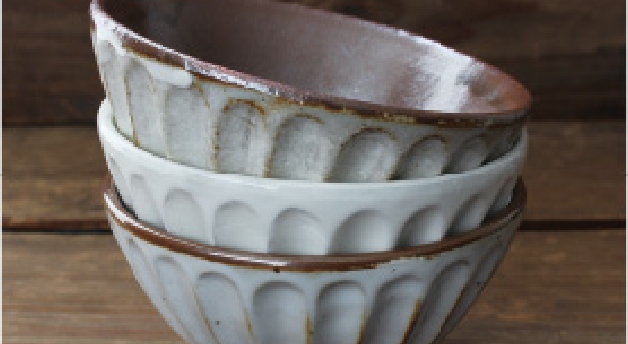
White slip coating
It is made by applying a white decorative clay over the base and then glazing it with a transparent glaze and firing it. Therefore, there may be minor cracks and penetrations on the surface. When soaked in water, spots may appear on the surface. Please handle with care as it is highly absorbent and easily stained. We recommend that you refer to [About Ceramics] below and take care of the potteries before and after use.
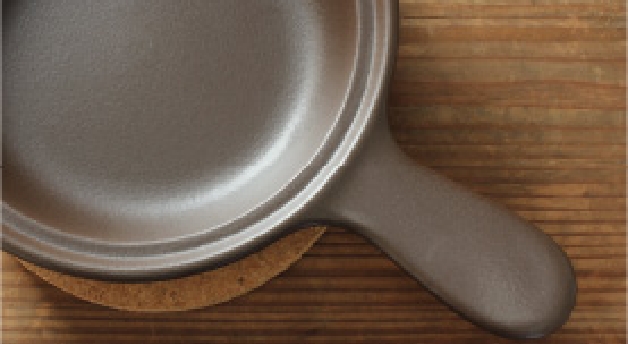
Heatproof ceramics
The notation “open flame OK” is used for heat-resistant ceramics [heat-resistant ceramics]. Open flame refers to the flame of a gas stove for home use. It is not suitable for use with induction cookers. It can be used in ovens, toaster ovens, fish grills, and other devices with stable temperatures. Due to the characteristics of heat-resistant ceramics, scorch marks and soot from the fire will seep into the pot during use. The surface can be washed clean, but once the color is stained, it cannot be removed.
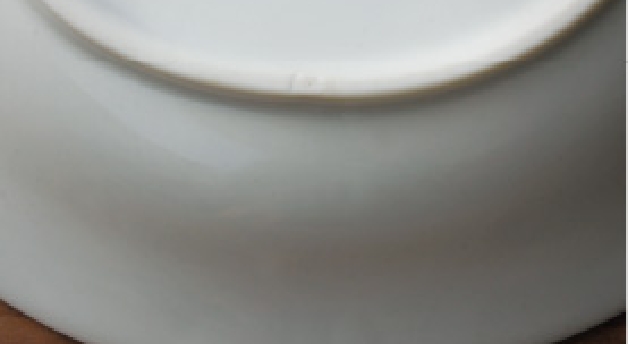
Pouring spout in ceramic molding (IKOMIGUCHI)
The mouth where the clay is poured into the mold is called the IKOMIGUCHI. The mouth of the mold is the part where the liquid clay is poured into the mold. Although they are scraped by hand to smooth them out, there are always traces of them. This is often seen on the bottom and base, but it is not a sign of damage.
Common precautions for Pottery, Semi-Porcelain, and Porcelain
- Rapid cooling or heating may cause damage.
- Do not use the product if it is damaged by a strong shock or dropped.
- Do not use chipped or cracked pieces as they may cause injury.
- When storing the ceramics, dry them well. Do not leave the container in a humid place, as it may cause mold and odor.
About Ceramics (Earthenware)
- Unlike semi-porcelain and porcelain, pottery is made from relatively coarse clay and is characterized by its warm texture and taste.
On the other hand, it is also susceptible to chipping and absorbs moisture easily. We recommend the following handling procedures to prolong the life of your ceramic ware. - Filler sealing
Before use, the starch will fill the surface and prevent stains from penetrating.- Place the bowl in a pot and bring rice water or water in which flour and potato starch have been dissolved to a boil over low to medium heat, then simmer over low heat for about 20 minutes.
- Allow to cool, rinse, and dry naturally.
- If the eyes are not completely filled in the first time, repeat the process several times.
- Preventing Stains, Odors, and Mold
Soak the pot in clean water before use to absorb moisture and reduce the risk of stains.
Ceramic products are water absorbent, so if left soaking in water for an extended period of time, they will absorb stains and cause stains, odors, and mildew. Wash immediately with detergent and dry well.
When storing the vessels, be sure to dry them thoroughly. Insufficient drying may cause odor and mold.
If stains or odors are present, soak the ware in a solution of baking soda or kitchen bleach to remove some of the stains. - Please do not use microwave ovens, ovens, or dishwashers.
(Products that can be used are indicated individually.) - Please refer to the handling instructions for ceramics (earthenware) attached to each ceramic product.









